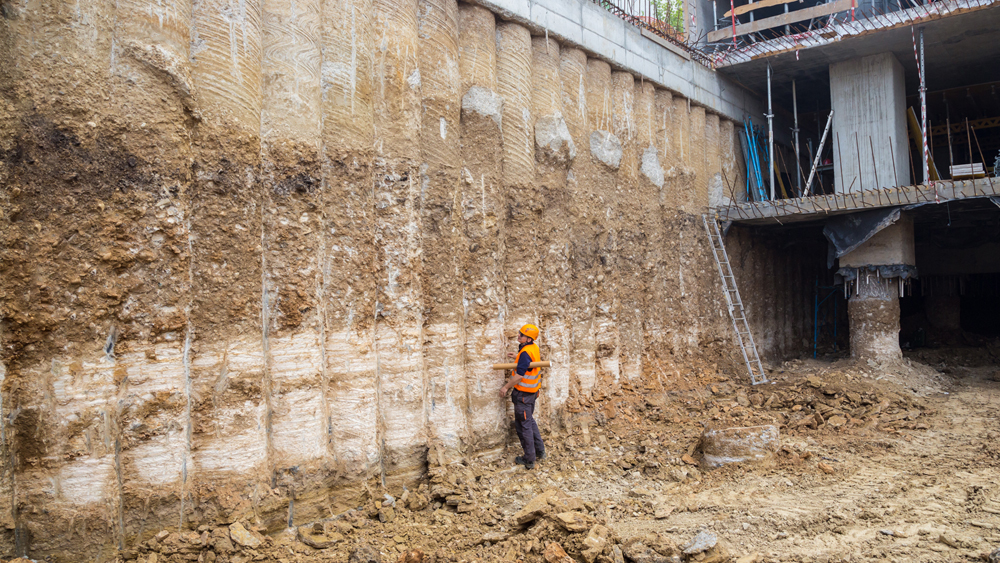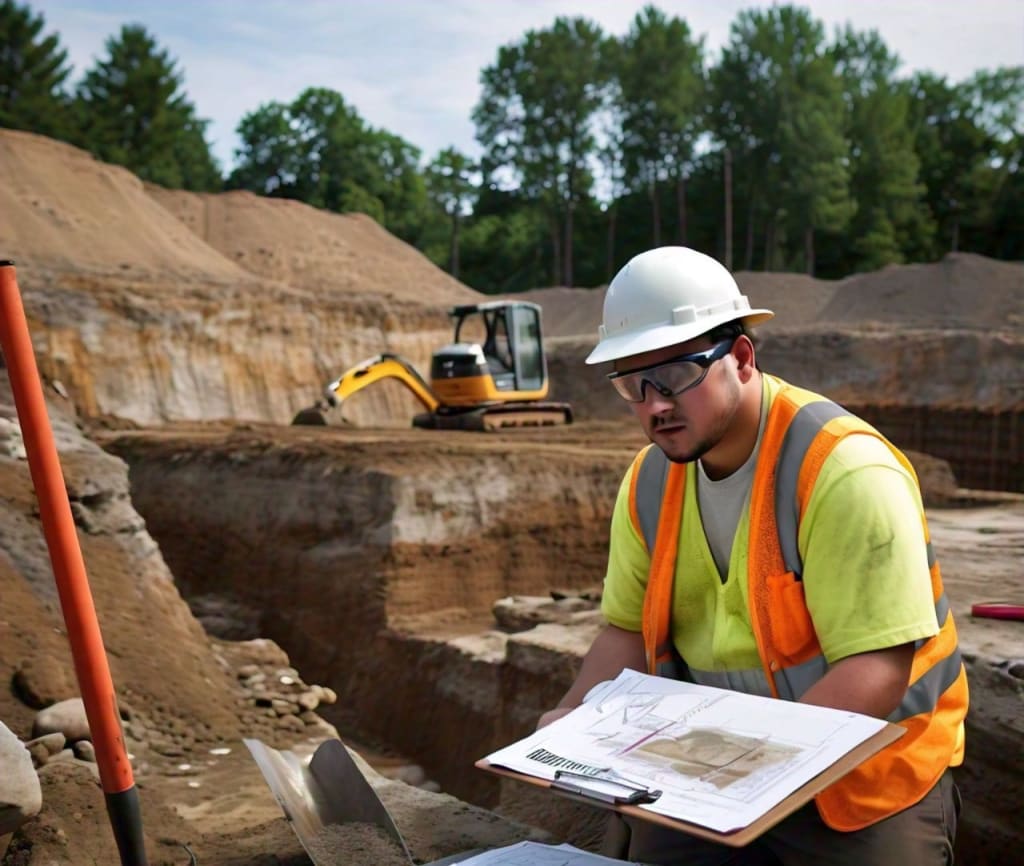Leading Consulting Civil Engineering Companies for Facilities Projects
Wiki Article
Exactly How Consulting Engineers Enhance Geotechnical Engineering Projects: Insights Into Their Knowledge, Approaches, and Collaborative Approaches
Consulting engineers are crucial in boosting geotechnical engineering jobs, applying their specialized expertise to browse the complexities of subsurface conditions. Their techniques include a series of site investigation strategies, consisting of Requirement Penetration Examinations (SPT) and Cone Infiltration Tests (CPT), which educate critical decisions during the style and construction phases. Additionally, their joint techniques foster communication amongst diverse job stakeholders, ultimately forming the project's trajectory. As we analyze the complex functions these experts play, it becomes clear that their contributions expand beyond technological knowledge, motivating a closer check out the implications for job success.Function of Consulting Engineers
The competence of speaking with designers in geotechnical design is essential to the successful execution of building jobs. These specialists play a critical function in examining dirt and rock residential properties, which are critical elements influencing style and building choices. By carrying out detailed website investigations, speaking with designers accumulate crucial data that informs the style process, making sure tasks are constructed on stable and suitable ground.Consulting engineers likewise give indispensable understandings right into threat monitoring (geotechnical geologist). They recognize possible geotechnical threats, such as landslides, dirt liquefaction, and negotiation concerns, allowing stakeholders to apply reliable reduction approaches. Their knowledge aids in optimizing structure designs, which can cause significant expense financial savings and improved safety and security
Moreover, seeking advice from engineers function as a vital web link between project proprietors, designers, and specialists. Their ability to translate intricate geotechnical information into workable suggestions fosters cooperation and assists in informed decision-making throughout the task lifecycle. This multidisciplinary technique not just improves project performance however also makes certain conformity with regulatory criteria and finest practices.
Trick Techniques in Geotechnical Design

One main technique is site investigation, which includes carrying out area examinations and laboratory analyses to gather information on subsurface problems. Techniques such as Requirement Infiltration Testing (SPT) and Cone Penetration Testing (CPT) are extensively used to assess dirt stratigraphy and strength. In addition, geophysical methods, consisting of seismic and electric resistivity surveys, offer non-invasive ways to assess subsurface features.
Another vital methodology is numerical modeling, which makes it possible for designers to simulate different circumstances and forecast exactly how soil-structure communications will certainly behave under various loading problems. Finite Aspect Evaluation (FEA) is a common strategy used in this context.
Furthermore, the layout of foundations, preserving frameworks, and earthworks counts greatly on these methodologies - geotechnical geologist. By incorporating innovative analytical tools with field data, speaking with engineers can develop customized remedies that attend to particular project challenges, inevitably adding to the stability and safety and security of building and construction jobs
Significance of Soil Evaluation
Dirt analysis functions as a foundational element in geotechnical design, providing essential understandings into site here the physical and chemical homes of soil needed for effective building planning. Recognizing soil features is important for establishing its load-bearing capability, water drainage habits, and capacity for negotiation or instability. Comprehensive soil examinations, including tasting and laboratory screening, assistance identify parameters such as dirt type, wetness web content, thickness, and shear strength.
These analyses notify the option of appropriate building strategies and materials, ultimately influencing job safety and security and longevity. Natural soils may require different foundation styles contrasted to granular soils, requiring customized design solutions. Soil analysis aids in recognizing impurities that might pose risks to human health see post or the environment, allowing for the development of reduction approaches.
Including dirt evaluation into the beginning of task growth aids to lessen unanticipated difficulties, making sure that engineers can anticipate and resolve prospective issues prior to they rise. By establishing an extensive understanding of the site problems, getting in touch with designers can enhance design performance and minimize costs, thereby boosting the general success of geotechnical engineering tasks.
Collective Approaches in Tasks
Successful geotechnical projects usually rest on joint approaches that combine diverse know-how from different techniques. additional reading Efficient collaboration amongst speaking with designers, geologists, ecological scientists, and building and construction experts is crucial for resolving complex obstacles and optimizing task outcomes. By leveraging the one-of-a-kind skills and expertise of each employee, tasks can benefit from an all natural understanding of the site problems, governing demands, and design constraints.Routine interaction and interdisciplinary meetings assist in the sharing of understandings and promote a society of teamwork. These collaborative initiatives make it possible for the identification of prospective threats early in the project lifecycle, enabling timely reduction approaches. Furthermore, including comments from stakeholders, consisting of local communities and regulative firms, ensures that all point of views are taken into consideration, enhancing job approval and compliance.
Additionally, the integration of advanced innovations, such as Geographic Info Solution (GIS) and Structure Info Modeling (BIM), additional improves partnership. These tools permit the real-time sharing of information and visualization of geotechnical conditions, promoting notified decision-making. Eventually, a collective method not only enhances job execution yet additionally lays the structure for ingenious options to complicated geotechnical engineering challenges.
Impact on Project Results

Consulting designers employ innovative approaches such as threat assessment and anticipating modeling, which boost the accuracy of task forecasts. Their capacity to integrate cutting-edge innovations, like geotechnical instrumentation and information analytics, additionally fine-tunes the layout and building procedures. As a result, jobs experience boosted efficiency, minimized prices, and minimized hold-ups.
In addition, fostering efficient interaction and collaboration among group participants enhances analytical capacities. When obstacles arise, an unified front enables swift identification of remedies, preventing prospective troubles. Ultimately, the collaborative efforts of getting in touch with engineers add to better results, ensuring that jobs meet both regulative standards and customer assumptions.
Verdict

Report this wiki page